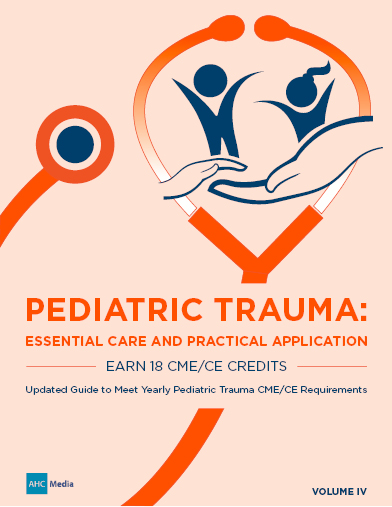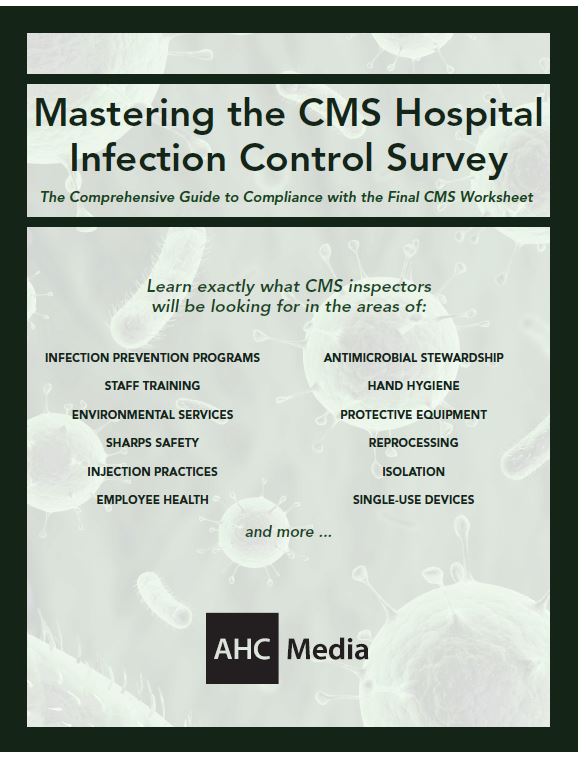
Compliance Mentor - September 2016
|
Free Monthly News from the Award Winning Publisher of: |
||||
|
Hospital Access Manage- ment |
Hospital Case Manage- ment |
Hospital Employee Health | Hospital Infection Control |
Hospital Peer Review |
|
Health- care Risk Manage- ment |
Case Manage- ment Advisor |
IRB Advisor |
Medical Ethics Advisor |
Same- Day Surgery |
CMS: More ACOs Qualify for Bonuses
Thirty-one percent of accountable care organizations (ACOs) qualified for bonuses from the Medicare Shared Savings Program (MSSP) based on their 2015 performance – the highest number to date, according to the Centers for Medicare & Medicaid Services (CMS).
According to CMS data, 400 Medicare ACOs generated more than $466 million in total program savings in 2015. Of these, 125 qualified for shared savings payments by meeting quality performance standards and their savings threshold — an increase from 2013 and 2014 when 28% and 26%, respectively, qualified for bonuses. The total savings to the Medicare program grew 13% from $411 million in 2014.
The ACOs with more experience in the Pioneer ACO Model and the Medicare Shared Savings Program tend to perform better over time, CMS says. Shared Savings Program ACOs that reported quality in both 2014 and 2015 improved on 84% of the quality measures. The average quality performance improved by more than 15% between 2014 and 2015 for four measures: screening for risk of future falls, depression screening and follow-up, blood pressure screening and follow-up, and providing pneumonia vaccinations. More than 91% of ACOs in a second or third performance year during 2015 increased overall quality performance scores through Quality Improvement Reward points in at least one of four quality measure domains.
“The results are not as strong as we, and many of our ACO members, had hoped for. But overall we are pleased to see the results show a positive trend for the program,” said National Association of ACOs president and CEO Clif Gaus in a statement. “These ACOs are on the front line of redesigning the healthcare industry, and this is a moment to celebrate them and their hard work.”

Audits Continue to Show Inadequate CMS Oversight of Medicare Advantage Plans
 Thirty-five out of 37 Government Accountability Office (GAO) audits reveal that some private Medicare Advantage plans fraudulently billed the federal government, according to data obtained by the Center for Public Integrity (CPI).
Thirty-five out of 37 Government Accountability Office (GAO) audits reveal that some private Medicare Advantage plans fraudulently billed the federal government, according to data obtained by the Center for Public Integrity (CPI).
The audits date back to 2007 and the money has been paid back, according to the CPI report. Among the insurers were five Humana health plans, three UnitedHealthcare plans, and four WellPoint plans. Medicare Advantage is a private option to standard Medicare that enrolls more than 17 million seniors. In 2014, Medicare paid the health plans more than $160 billion.
The overbilling comes from errors in the so-called “risk-score” that adjusts payment to the Medicare Advantage plans, giving a lower rate for patients who are healthy and a higher rate for sicker patients. Insurance companies were purportedly manipulating risk scores to receive larger payments, especially for conditions such as diabetes, depression and drug addiction, a practice known as “upcoding,” according to CPI.
The GAO has called for improvements to curb excess charges linked to faulty risk scores and has been critical of CMS for not ramping up the internal Medicare Advantage audit process. An internal audit by CMS in 2014 revealed that $14.1 billion were improperly billed by Medicare Advantage plans in 2013. That money has largely been unrecovered, according to CPI.

CMS Marketplace Policy Changes Look to Strengthen the Risk Pool
In response to insurance companies pulling out of Affordable Care Act (ACA) exchanges, CMS published policy changes to support the insurance companies who have concerns about high-cost enrollees and risk adjustment.
The policy changes are part of an effort to strengthen the risk pool, ACA Marketplace CEO Ken Counihan wrote in a CMS blog post. Proposed changes in the policy statement that are meant to help insurers deal with high-cost enrollees and risk adjustment include the following:
- The rule proposes a modification to risk adjustment regarding the cost of enrollees who do not stay with an issuer for the full plan year.
- The rule proposes using prescription drug utilization data as a source of information about the enrollee’s health and the severity of their conditions in an effort to mollify the financial risk associated with high dollar medications.
- The rule proposes modifying risk adjustment as to costs associated with the most expensive enrollees by having insurers share the costs of the highest cost covered enrollees.
Among the proposed changes meant to strength the Marketplace Risk Pool are the following:
- Continue to ensure the proper use of Special Enrollment Periods to allow people who lose coverage or experience other qualifying events an opportunity to enroll in the marketplace.
- Continue to encourage people who qualify for Medicare to move from the marketplace to Medicare, thereby reducing the risk profile of marketplace participants.
- Proposals to give issuers more flexibility in calculating their medical loss ratios, and to avoid instances where issuers who are adjusting individual market or group market portfolios would inadvertently trigger a ban on participating in the individual or group market.
- The proposed rule offers more flexibility for innovation around plan design by issuers, particularly around bronze plan offerings.
There is still uncertainty as to whether these proposals are strong enough to keep insurers in the marketplace or draw them back in. Next year, Aetna will offer individual insurance products in only four states, claiming it lost $200 million on its ACA exchange plans in the second quarter of 2016 with total losses of $430 billion since 2014. UnitedHealthcare will offer ACA plans in just three states next year.

New York Hospital Group Reaches $2.95 million Settlement Over Claims It Delayed Medicaid Repayment
The United States Attorney in Manhattan announced a settlement with a New York hospital group over claims it willfully delayed repayment of more than $800,000 in Medicaid overpayments. The settlement resolves claims under the federal False Claims Act (FCA) and the New York State False Claims Act.
The United States’ complaint against Mount Sinai Beth Israel, Mount Sinai St. Luke’s and Mount Sinai Roosevelt, and Continuum Health Partners alleges that between 2009 and 2010, Continuum erroneously submitted claims to Medicaid for payment due to a software error. Continuum was alerted to the software error by the New York State Comptroller in 2010. In February 2011, an internal investigation by Continuum identified approximately 900 claims totaling over $1 million that may have been wrongly submitted to and paid by Medicaid. This list, created by the whistleblower who filed this qui tam lawsuit, contained all of the claims that were affected by the software glitch. Rather than using the list to repay the claims, Continuum terminated the whistleblower, failed to bring this list to the attention of the government, and took nearly two years to complete its repayments, according to the complaint.
In the first ruling of its kind interpreting the 60-day rule, U.S. District Judge Edgardo Ramos rejected Continuum’s contention that the 60-day period of repayment starts when the entity has completed all due diligence and is certain that they owe Medicaid money. “Under the defendants' framework, their obligation to pay would not be triggered until after they have done the work necessary to determine conclusively the precise amount owed to the Government, thus creating a perverse incentive to delay learning the amount due and relegating the 60-day period to merely the time within which they would have to cut the check,” Ramos wrote in his opinion. “This is likely not what Congress intended. Therefore, while the Government's interpretation would impose a stringent — and, in certain cases, potentially unworkable — burden on providers, defendants' interpretation would produce absurd results.”
It remains to be seen whether the U.S. Courts of Appeal will agree with this strict interpretation of the 60-day requirement.

Robert B. Vogel, MD, JD
Retinal Ophthalmologist at Piedmont Eye Center, Lynchburg VA;
Attorney, Overbey Hawkins & Wright, PLLS, Lynchburg, VA;
Adjunct Professor, Humanities and Bioethics, Liberty University School of Medicine, Lynchburg, VA.
|
UPCOMING HOSPITAL WEBINARS Live Webinars Now Discounted 15% Or More! |
|||||
|---|---|---|---|---|---|
|
Violence Prevention in Healthcare: OSHA Requirements |
Sign Up → | |||
|
Transitions in Care and the Bundled Payment Population | Sign Up → | |||
|
CMS Hospital Improvement Act Proposed Changes | Sign Up → | |||
|
Leadership Standards Essential to Engage Staff, Support Operations and Provide Quality Care | Sign Up → | |||
|
The IMPACT Act and its Effect on Discharge Planning Standards | Sign Up → | |||
|
Case Management in Acute Care and Community-Based Settings | Sign Up → | |||
|
Anesthesia Standards: The CMS CoPs | Sign Up → | |||
|
Case Management Best Practices: Communication & Hand-Offs | Sign Up → | |||
|
Interdisciplinary Rounding to Improve Case Management Outcomes | Sign Up → | |||
|
Prioritize Patient Needs at Every Level | Sign Up → | |||
FEATURED RESOURCES




